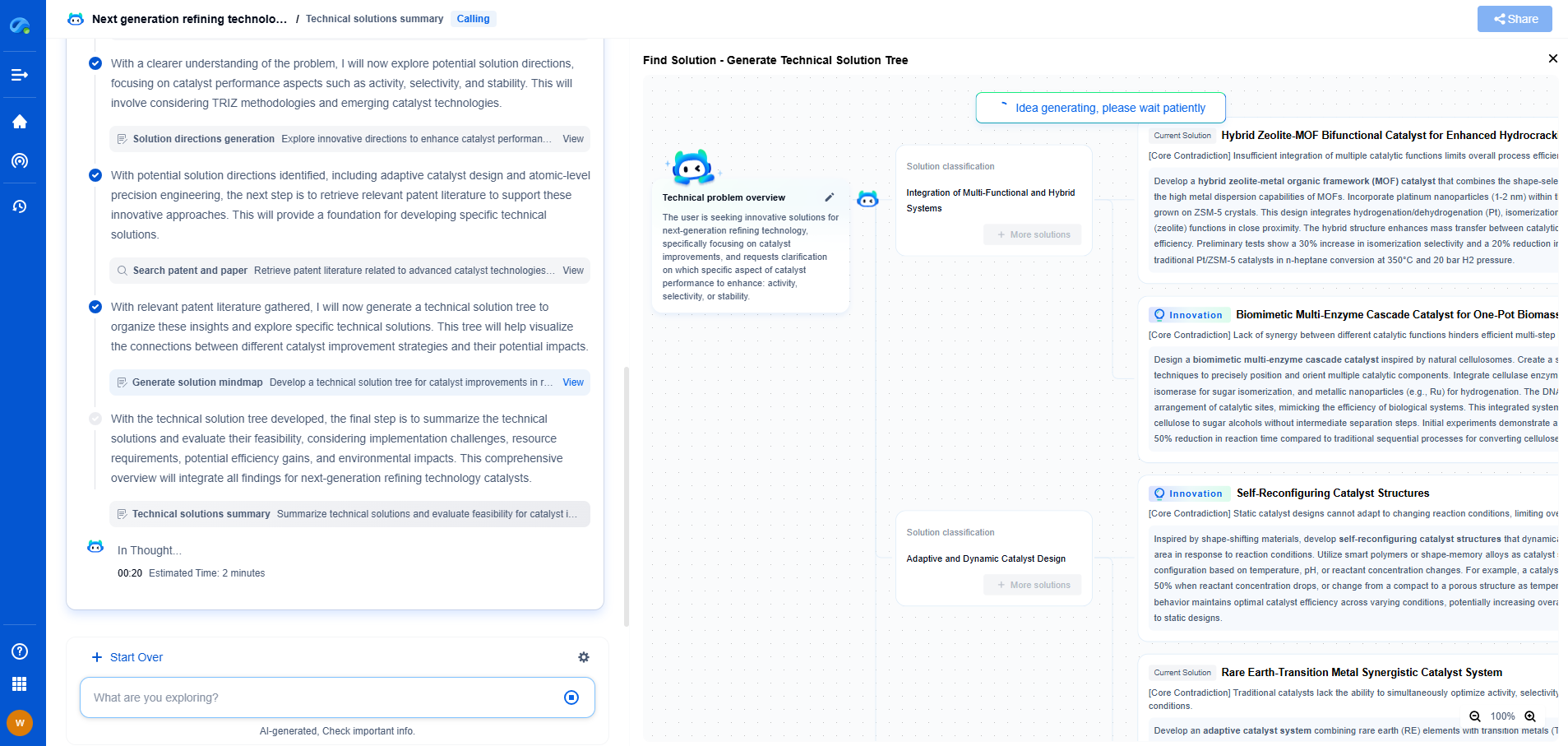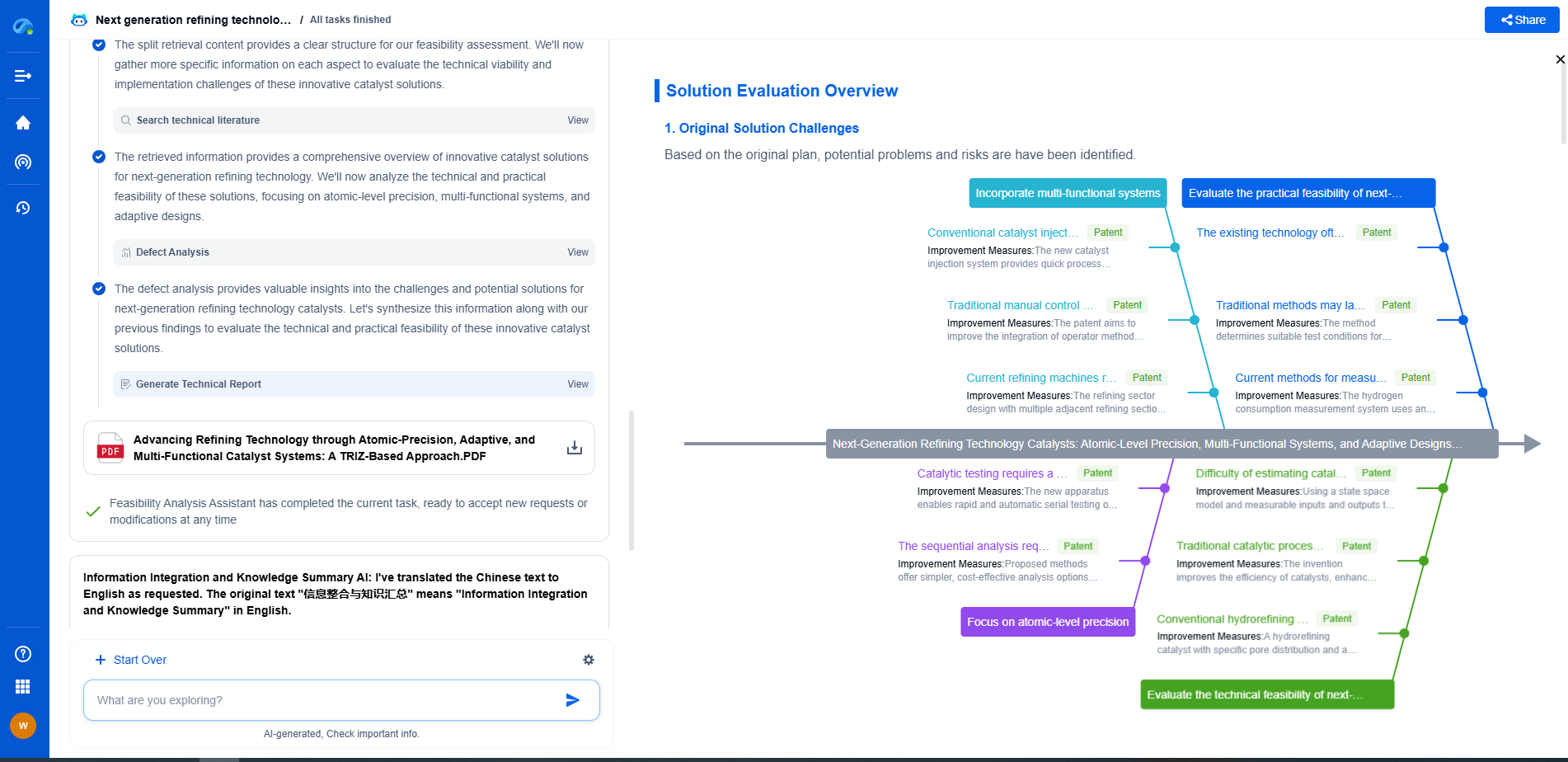LNG Peak Shaving Vaporizer Freeze-Up: Glycol Heating Solutions
JUL 21, 2025 |
Liquefied Natural Gas (LNG) peak shaving facilities play a critical role in energy management, providing a reliable supply of natural gas during periods of high demand. However, one of the persistent challenges these facilities face is the risk of vaporizer freeze-up. This phenomenon occurs when the LNG, used to generate additional natural gas, causes the vaporizer equipment to freeze due to the extremely low temperatures involved. Addressing this issue is crucial for maintaining operational efficiency and ensuring a steady supply of natural gas. One effective solution to this problem is the implementation of glycol heating systems.
Understanding the Freeze-Up Problem
LNG vaporizers are designed to convert liquefied natural gas back into its gaseous state. This process requires the LNG to be warmed from its cryogenic state to ambient temperature. However, this warming process can lead to freeze-up issues when the vaporizer system is not adequately insulated or heated. Freeze-up occurs when the LNG's low temperatures cause moisture in the air or residual water in the system to freeze, leading to blockages and operational inefficiencies.
Traditional Solutions and Their Limitations
Historically, various methods have been employed to combat freeze-up in LNG vaporizers. These include the use of electric heaters and steam systems to maintain the necessary temperatures. However, these methods often come with limitations. Electric heating systems can be energy-intensive and expensive to operate, while steam systems require extensive infrastructure and can be inefficient in certain conditions. Additionally, both systems may require significant maintenance and monitoring to ensure optimal performance.
The Advantages of Glycol Heating Solutions
Glycol heating systems offer a more efficient and reliable solution to the freeze-up problem. Glycol, a type of antifreeze, is used to transfer heat effectively without freezing, even in extremely low temperatures. By circulating a glycol-water mixture through the vaporizer system, consistent heat is provided, preventing freeze-up and ensuring smooth operation.
One of the primary advantages of glycol heating is its ability to maintain a uniform temperature throughout the vaporizer system. This uniformity reduces the likelihood of cold spots where freeze-up could occur. Moreover, glycol systems are relatively easy to install and maintain, offering a cost-effective alternative to more traditional heating solutions.
Design and Implementation of Glycol Heating Systems
Implementing a glycol heating system involves careful design and planning to ensure maximum efficiency. The system typically consists of a glycol storage tank, a heat exchanger, circulation pumps, and a network of pipes to distribute the glycol mixture throughout the vaporizer. A control system is also necessary to monitor and adjust temperatures as needed.
The design process begins with a thorough assessment of the vaporizer system to determine the optimal placement of heating elements and the appropriate concentration of the glycol mixture. Engineers must consider factors such as the size of the vaporizer, the ambient temperature range, and the specific operational requirements of the facility.
Maintenance and Monitoring for Long-Term Success
While glycol heating systems are generally low-maintenance, regular monitoring and maintenance are essential to ensure their continued effectiveness. Routine checks of the glycol concentration, pump functionality, and heat exchanger performance can help identify potential issues before they lead to system failure. Additionally, periodic inspections of the piping and control systems will ensure that the entire setup operates smoothly.
Conclusion: A Proven Solution for LNG Facilities
In conclusion, freeze-up is a significant challenge for LNG peak shaving facilities, but it can be effectively managed with the implementation of glycol heating systems. These systems provide consistent and reliable heat, preventing freeze-ups and ensuring the continuous operation of vaporizers. By investing in a well-designed glycol heating solution, LNG facilities can enhance their operational efficiency, reduce maintenance costs, and guarantee a stable supply of natural gas during peak demand periods.
As clean energy and decarbonization drive new breakthroughs in hydrogen storage, CO₂ transport, and alternative gas carriers, keeping pace with technical trends and patent activity is critical to staying competitive.
Patsnap Eureka helps innovators in compressed gas storage, high-pressure tank design, gas sensor systems, and pipeline materials accelerate research by offering instant, AI-powered insights into global patents, related technologies, and emerging white spaces.
🚀 Bring speed, precision, and strategic foresight to your innovation and IP decision-making in the gas transport sector—try Eureka today and unlock a smarter path forward.
- R&D
- Intellectual Property
- Life Sciences
- Materials
- Tech Scout
- Unparalleled Data Quality
- Higher Quality Content
- 60% Fewer Hallucinations
Browse by: Latest US Patents, China's latest patents, Technical Efficacy Thesaurus, Application Domain, Technology Topic, Popular Technical Reports.
© 2025 PatSnap. All rights reserved.Legal|Privacy policy|Modern Slavery Act Transparency Statement|Sitemap|About US| Contact US: help@patsnap.com

